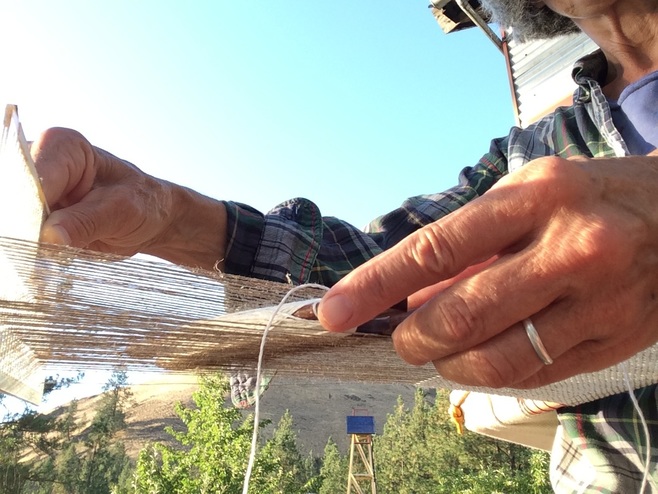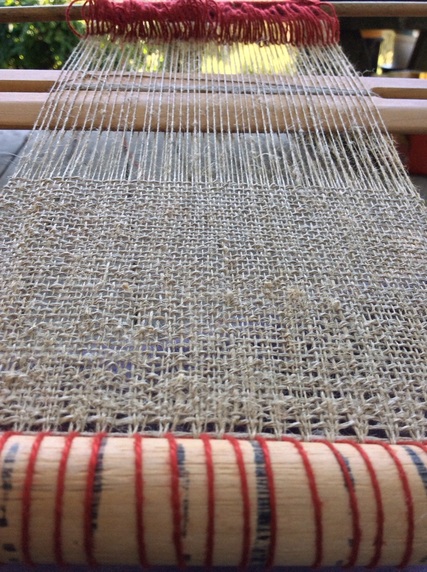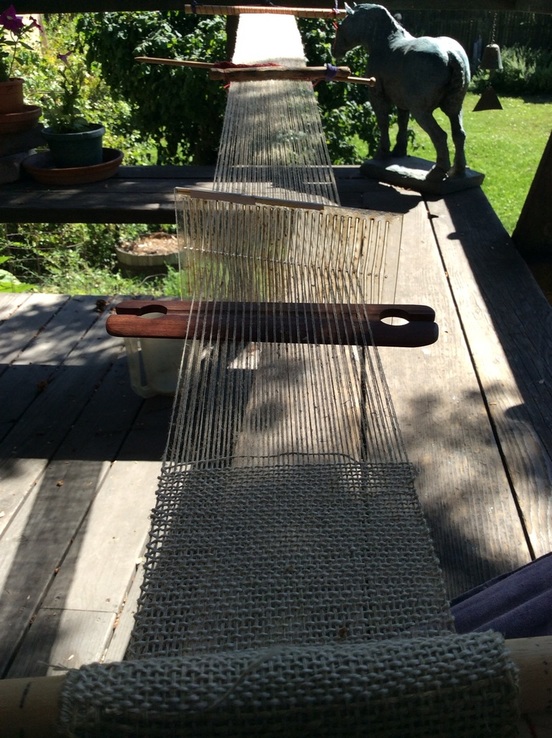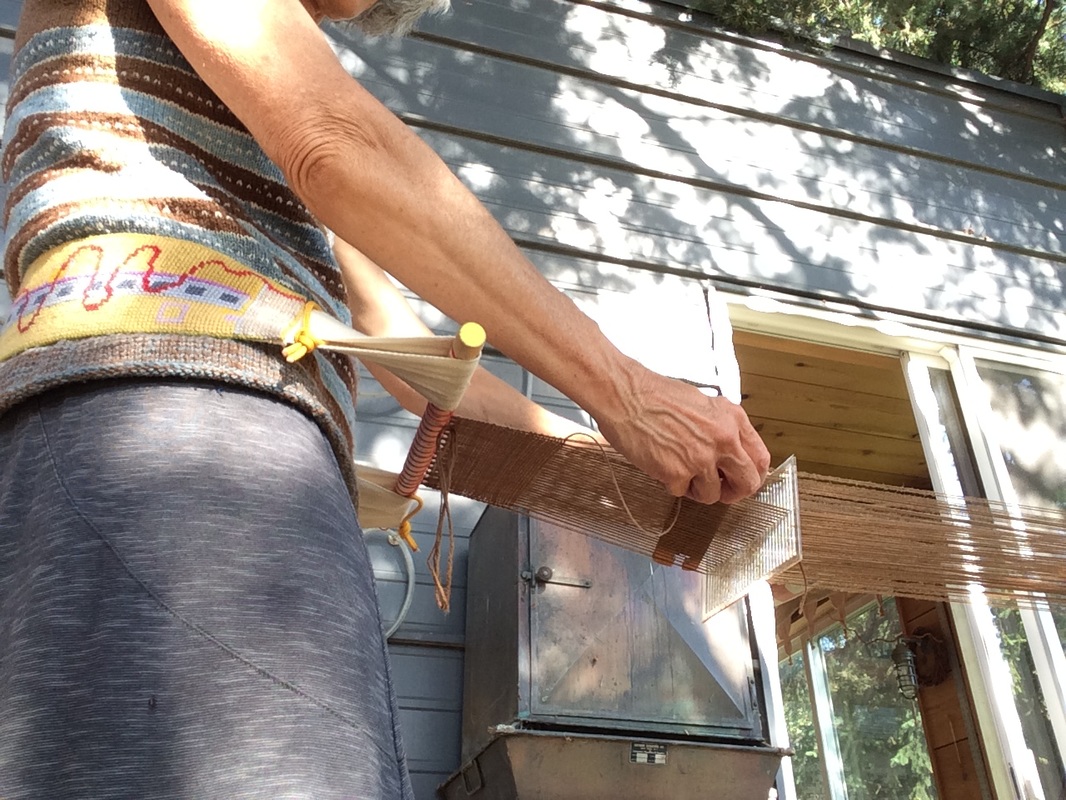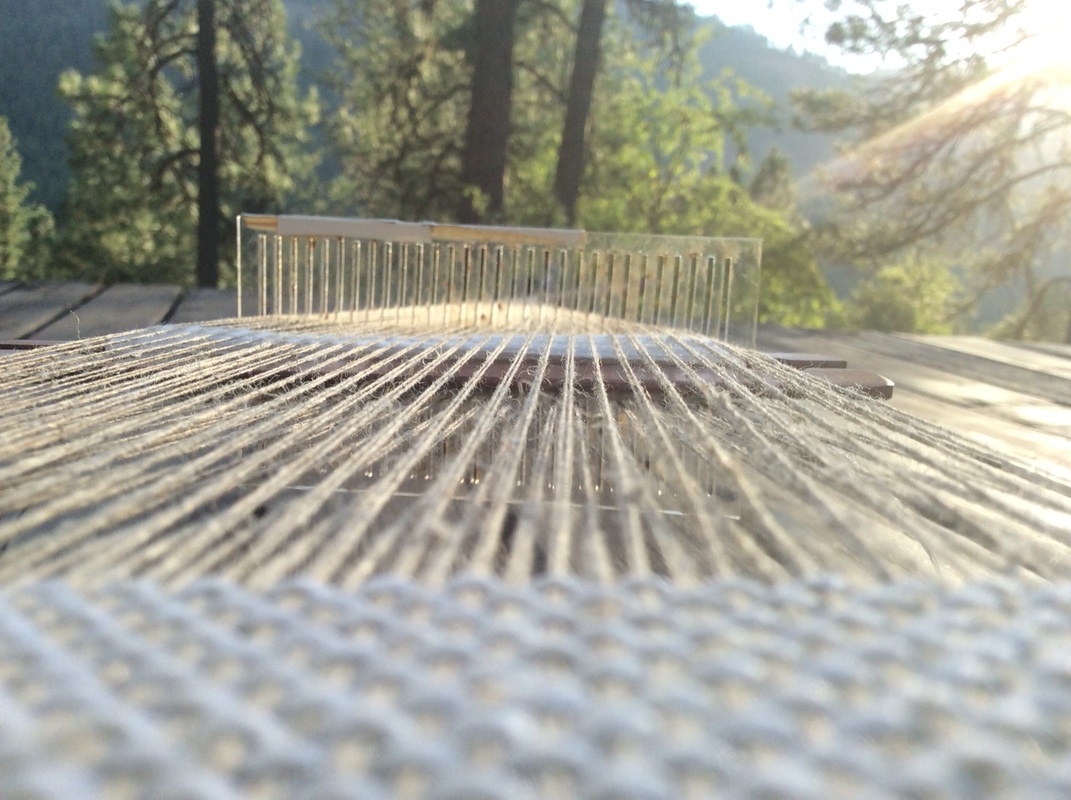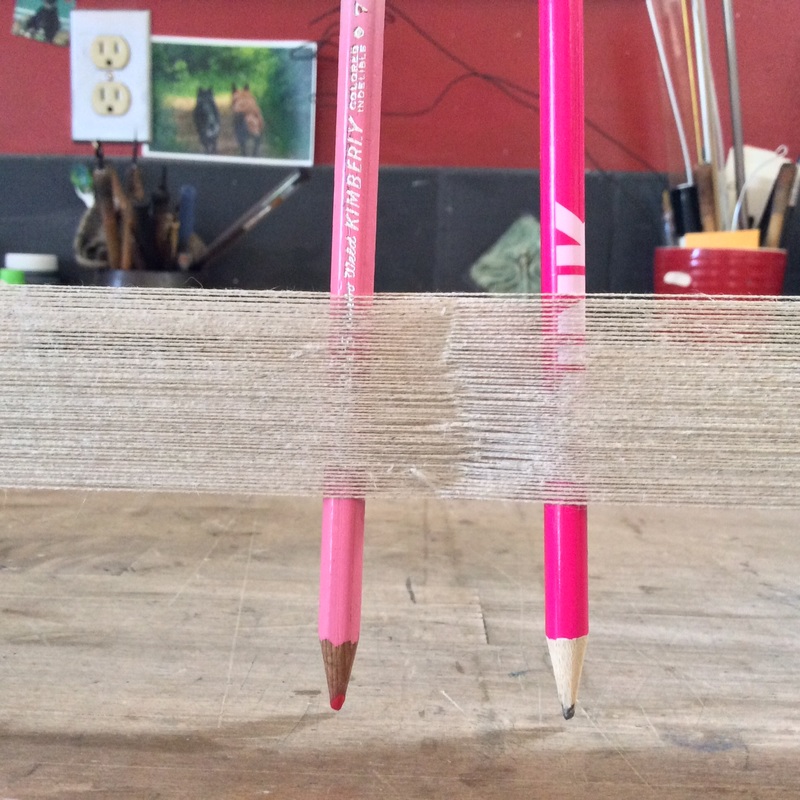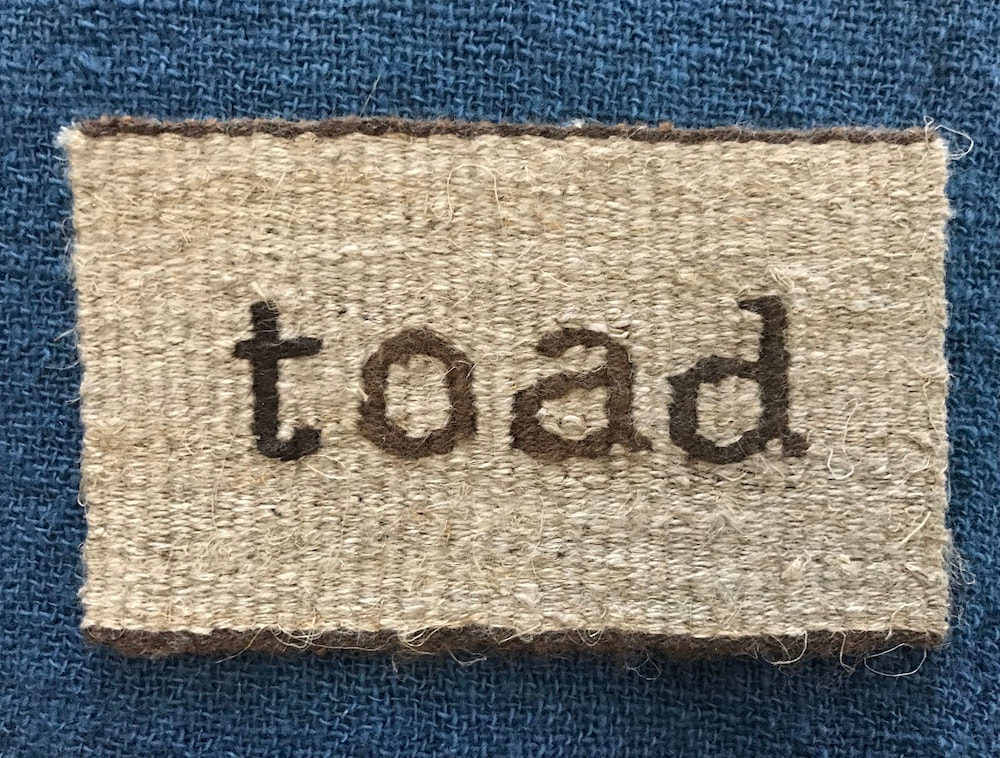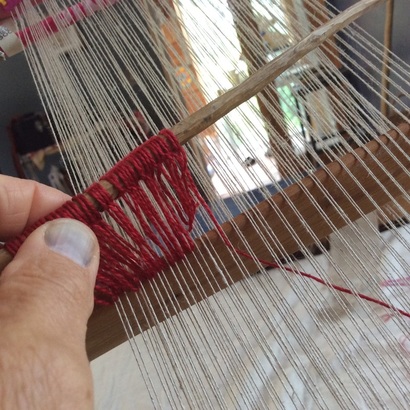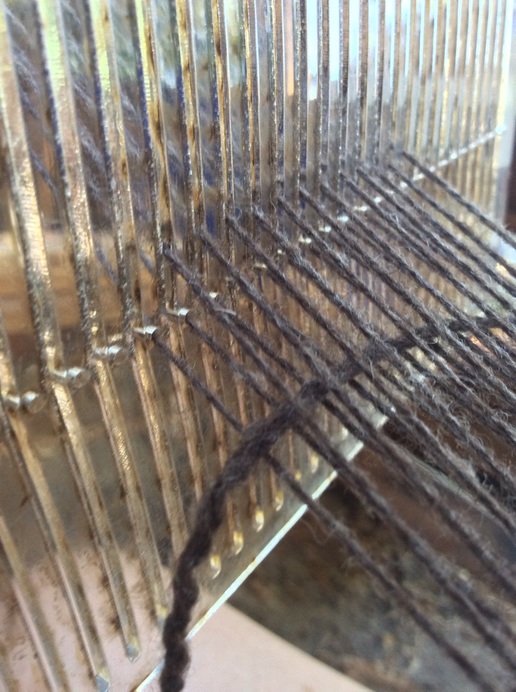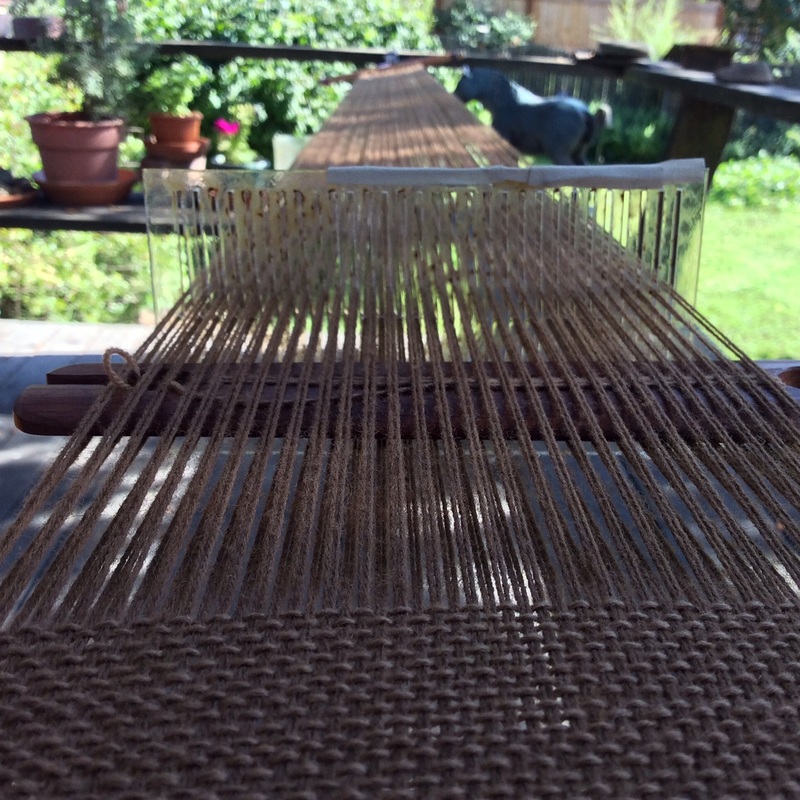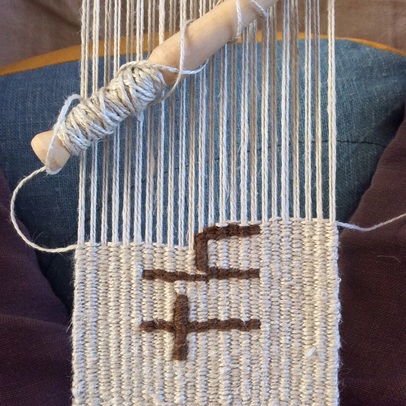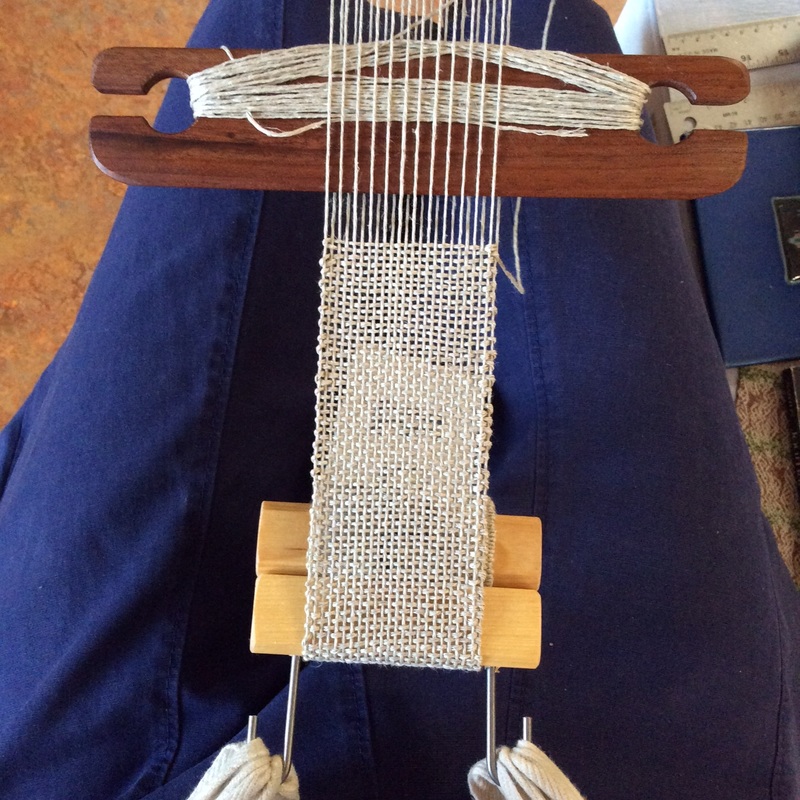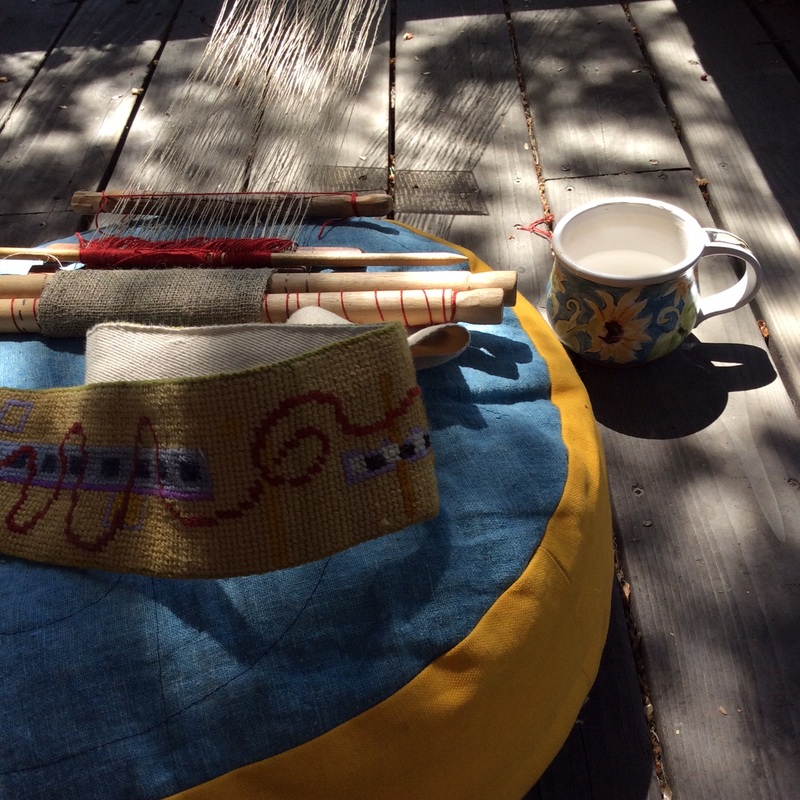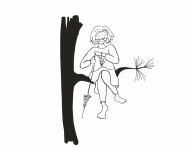but that it would awaken long neglected passions:
for for balanced plain weave (27years),
for weaving with linen (23 years)
but here are a few thoughts from my limited but focused experience :
1. It's magical to be part of my loom
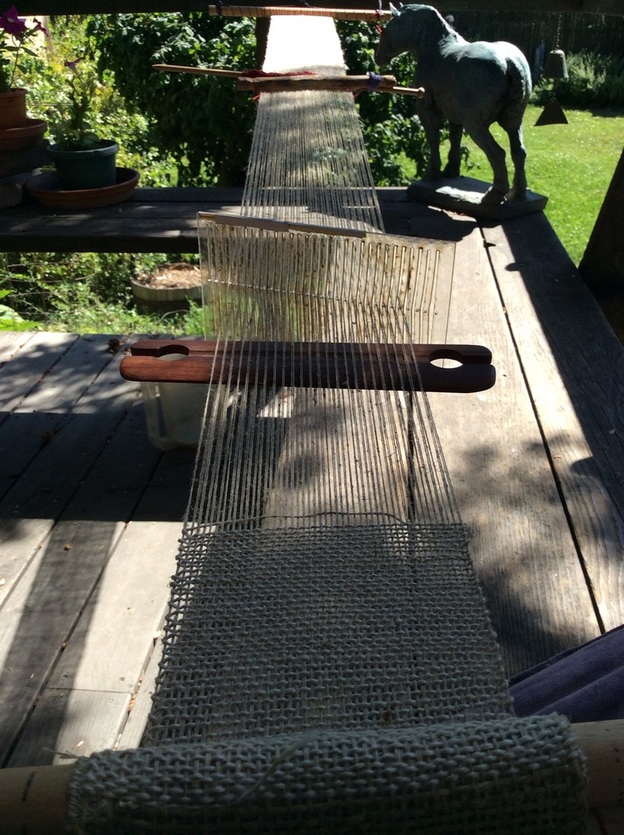
different shedding mechanism on each side:
a hand made rigid heddle on the near end
string heddles and a shed stick on the far.
Also, you might want to find some of the stuff out for yourself.
But before closing,I thought I'd include some comparative thoughts on the two shedding mechanisms I've tried. Three, actually.
| STRING HEDDLES and SHED STICK advantages: - quick and easy to make -super simple yet secure - does not require pre-threading -can use any sett you want -fabulous for tapestry/ discontinuous weft (like using leashes, just reach up, grab and lift to open specific warp threads). -pleasant rhythm | disadvantages: -traditionally used for warp faced-fabric rather than balanced structures, and can see why as I found it hard keep the warp spacing consistent, particularly with linen. I had better luck with wool warp, and no trouble at all when weaving tapestry, so perhaps it is a matter of experience. note: actually, this inconsistency is also an advantage as I rather like the look of the wonky fabric I've made... -shed stick sometimes wants to fall out and, even if tied in place, can have a mind of its own. Experience again, I'm sure... maybe make one and leave the bark on? |
| RIGID HEDDLE advantages: -consistent sett -consistent and even shed -even fabric -works as shedding mechanism and beater -a variety of sizes available -doesn't fall out when rolling up the warp -easy to use with very pleasant rhythm -ability to store a long piece of unwoven warp in a chain because the heddle spreads it out well before the fell -lots of stuff I don't know about yet but hope to learn | disadvantages: -stuck with the sett of the heddle(s) you have (unless using two at once which I have yet to try but is on my project list) -harder for very fine setts (see above) -awkward for discontinuous weft -- again, this is personal but like most shedding mechanisms other than leashes/shed stick/ fingerpicking, the heddle feels too separate from the area of action and slows me down. -have to cut the warp to thread the heddle (unless doubling fine warp) so can't weave from both ends with 3 selvedge edges. |
advantages:
-quick and easy to set up
-extreme simplicity
-the system I'm used to
disadvantage:
- warp/loom rocks in an irritating fashion when scooping the picked shed, something that doesn't' happen on a fixed loom.
I am only a yard or so into its first outing so far, but can see many advantages, not least that the piece can get really really long without having to deal with an ever-increasingly and eventually awkward cloth roll at my belly. I've just ordered the larger size (this is the medium), so stay tuned!
So much for using only what is at hand, but who wants to be consistent?
Eventually, I hope to talk about the linen/wool question,
my anticipated band lock exploration,
and of course the bliss of needlepoint on my own canvas,
because backstrap is apparently no longer just a distraction,
but a part of my practice.
Proof: I just added a new post category.
Who knew?
